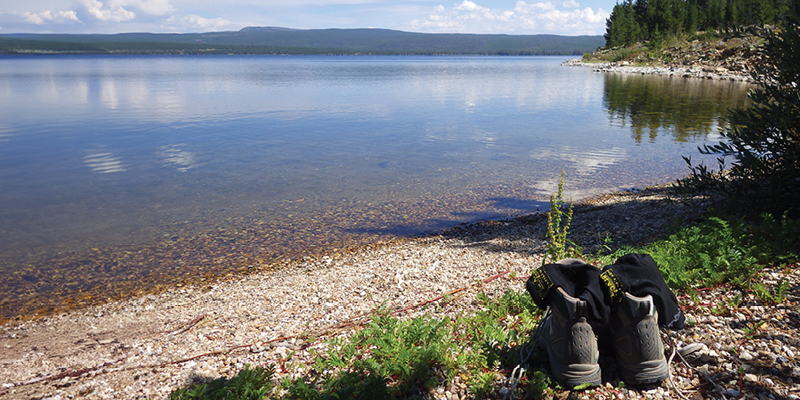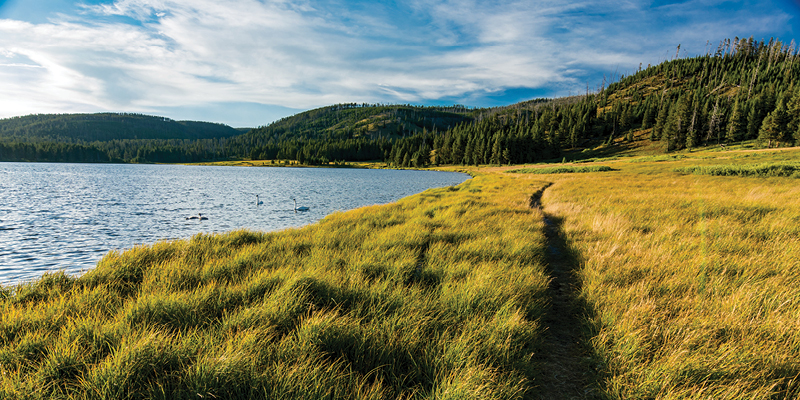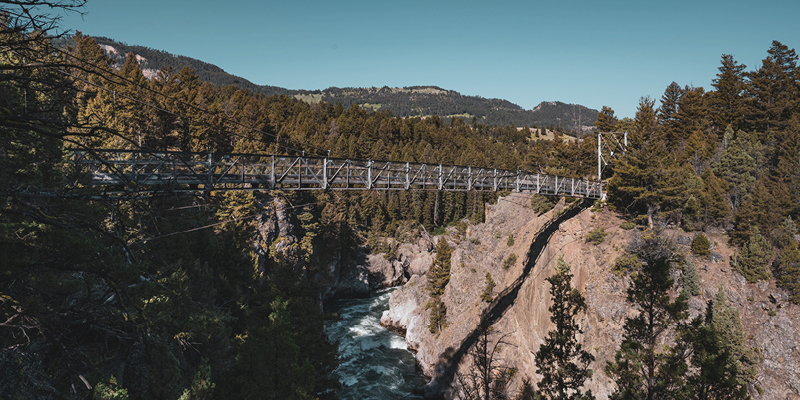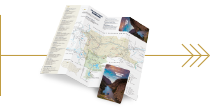Backpacking in Yellowstone National Park
 Heart Lake, Yellowstone National Park, Photo by Lisa Stoorza
Heart Lake, Yellowstone National Park, Photo by Lisa Stoorza
Yellowstone National Park encompasses 3,472 square miles (2,221,766 acres.) An area so vast and beautiful you could explore it for a lifetime. And, while the main attractions can be busy during the summer, just a few steps off the beaten path, you'll find solitude, seemingly endless miles of trails, backcountry thermals not found on maps, and more waterfalls than any other national park.
There are 293 designated backcountry campsites in Yellowstone, set in the heart of some of the most spectacular fishing, hiking, wildlife watching, and scenery in the lower 48. Depending on your interest and skill level, options range from flat, open walks to highly technical hikes with enormous views. We suggest going late July to mid-September when the snow has melted, the mosquitos have died off, and the bears are less active than in early spring.
Permits are required to stay in Yellowstone's backcountry. Each campsite has bear poles for food storage (you'll need to bring your own rope.) Weather can be unpredictable, with blue skies in the morning and rolling thunderstorms in the afternoon, so bring layers – it has been known to snow more than once during the summer months! Be sure you know how to use your bear spray and other tips on being bear-aware.
We've created a list of various hikes to pique your interest, but be sure to read up on the permitting process. Contact the Park Service for up-to-date information to make the most of your experience.
Yellowstone Lake to Heart Lake
This 49.3-mile hike isn't steep, but it is long. You'll climb over the Continental Divide but only gain 270 feet in elevation in the first 42 miles. Don't let this fool you, the scenery is breathtaking, and the fishing is excellent!
Heart Lake Loop
Heart Lake is massive, spanning 2,160 acres and dropping 180 feet deep. It sits under the shadow of Mount Sheridan, which has the reputation of being one of the most scenic mountaintop hikes in the park. There's a lookout at the top of the 10,308-foot summit. It's a challenging hike, gaining 2,700 feet in elevation in only 3 miles, but I hear the vistas are well worth it. This loop includes angling, wildlife watching, thermal areas, and hiking.
 Grebe Lake, Yellowstone National Park, Photo by Benedikt Juerges
Grebe Lake, Yellowstone National Park, Photo by Benedikt Juerges
Chain of Lakes
For an easy backpacking trip or a long day hike, this is the only hike in Yellowstone where you can see four lakes in a relatively short distance (13.5 miles.) August and September are best for this hike since the bugs drop off, but the benefit of the bugs is that the trout populations have an abundant food source, which also attracts fish-eating birds like pelicans and osprey.
Crescent Lake
This hike is strenuous and best done over four days, but the scenery is beautiful. You'll hike through mature forests, unaffected by the wildfires and full of elk. Crescent Lake and High Lake are great places to camp, and you can take a day hike to nearby Shelf Lake.
 Hellroaring Creek, Yellowstone National Park, Photo by Kelly vanDellen
Hellroaring Creek, Yellowstone National Park, Photo by Kelly vanDellen
Hellroaring Creek
This hike is an excellent overnight for beginning backpackers, or it can also be a short day hike. There's a suspension bridge over the Yellowstone River, and we encourage you to use it. Even in low water, it's tricky to ford this water. This is also an excellent early-season hike – the trail is in great condition, and the lower elevation dries earlier.
Snake River Loop
Another long trek, the Snake River Loop, is 29.2 miles round trip but has no big hills, so don't let the length deter you. The loop is not a traditional loop but rather a lollipop loop that backtracks in the beginning and end but saves you from having a shuttle.


